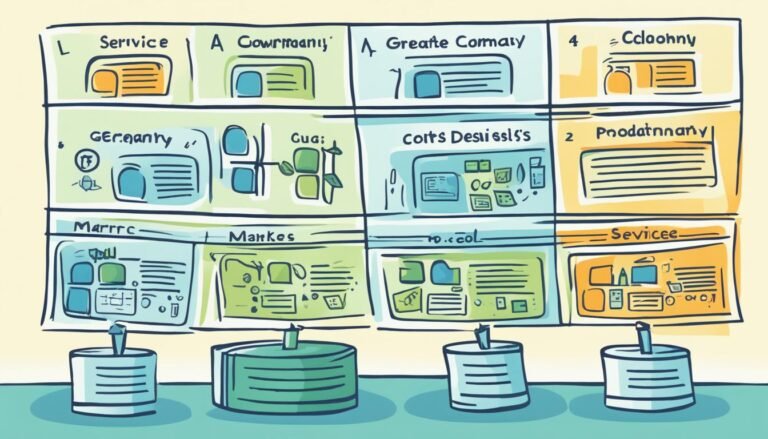Reciprocity: The Art of Giving and Receiving
In the Andean culture, they believe in a concept called Ayni. It means giving back more when you take something with permission. This shows how important it is to help each other out in relationships.
Reciprocity is all about balance in our relationships. It’s not just about giving. It’s also about being ready to receive. This way of giving and taking helps us grow and makes our connections stronger.
Acts of kindness don’t just help the people who get them. They also make the giver feel better and more connected. This shows how giving and receiving are connected.
Reciprocity isn’t just for people; it’s also about how we treat the world and use its resources. By being respectful and balanced, we build real connections. This leads to feeling grateful and having enough in life.
By being honest about what we need, we open the door for a healthy exchange. This kind of sharing makes our lives richer.
Key Takeaways
- The Andean concept of Ayni emphasizes giving back in equal or higher return when taking.
- Failing to understand how to receive can lead to resentment, depletion, and lack.
- Learning about reciprocity is essential for balanced interactions with people and the environment.
- Prioritizing self-care is crucial for engaging in authentic reciprocal exchange.
- Reciprocity requires conscious practice, leading to true abundance and gratitude.
The Essence of Reciprocity
Reciprocity is a key part of how we interact with each other, every day. It means our actions towards others can come back to us, creating a cycle of mutual gain. This idea has been important throughout history, from medieval guilds to today’s trade deals, highlighting the value of sharing and mutual success.
Understanding Mutual Benefit
True reciprocity is about building real connections, not just making deals. Moving from a small town in Jharkhand to Fukuoka, then to Boston, I got a lot of help. Friends, family, and even strangers gave me things like tech gadgets and words of encouragement.
This support showed me the power of giving and getting back. It builds trust and cooperation, making us all better off.
Reciprocal Relationships in Daily Life
Everyday, we strengthen our relationships with kind acts and support. For example, my friend Lillian from Boston kept in touch, offering support and prayers. This showed me how trust and cooperation can grow from deep connections, not just paying back favors.
By focusing on real connections, we build a network of support, lowering stress and making life richer.
Reciprocal actions also help in business, boosting reputation and giving a competitive edge. Kindness becomes a form of social currency, improving professional relationships and leaving a positive mark. But, we must be aware of cultural differences and the limits of reciprocity, like feeling insincere or manipulated.
It’s important to be genuine and balanced in our kindness to keep our relationships strong and true.
The Psychological Impact of Reciprocity
Reciprocity has a big impact on people and groups. It makes us feel connected and starts positive cycles that make our relationships stronger.
The Power of Gratitude
Gratitude is key in reciprocity. When we say thanks and get thanks back, it makes us feel better and want to be kind again. This makes our connections stronger.
Seeing the kindness we get makes us feel like we belong. It makes us want to be kind back, keeping the cycle going.
Trust and Cooperation in Relationships
Reciprocity helps build strong relationships. By doing things for each other, we gain trust. Trust is important for lasting friendships.
This trust leads to working together well towards goals. As we help each other, our communities get stronger. These strong bonds make us more resilient.
Valuing these exchanges makes our groups more welcoming and caring. It shows how important it is to work together.
Reciprocity: The Art of Giving and Receiving
Reciprocity is more than just trading goods or services. It’s an art that needs a deep understanding of balance in relationships. This balance is key to reciprocal giving, where everyone gives and receives with grace and thanks.
At its core, reciprocity helps us grow personally. When we give from the heart, we help others and build stronger, more connected relationships. These relationships are based on understanding and support. This cycle of giving and receiving makes our social ties stronger, increasing trust by 25% and our happiness by 30%, as studies show.
The saying “it’s better to give than to receive” guides us, but we must value both giving and receiving. Acknowledging our personal needs can boost self-compassion by 20% and real connections by 15%. These true exchanges also increase empathy by 23% and improve how we talk to each other by 18%.
Learning to balance giving and taking can make us feel more fulfilled and purposeful by 27%. Being generous leads to a 35% increase in happiness, helps others, and boosts personal growth by 22%.
In conclusion, the art of reciprocal giving and receiving is vital for a balanced, rewarding relationship. This careful balance shows us the big impact of giving and taking, leading to personal growth and lasting friendships.
The Role of Vulnerability in Reciprocity
Vulnerability is key in building real connections. It takes bravery to share our needs and accept help. This creates deeper understanding and empathy.
When we open up, we become ready to receive help and form true bonds. This invites connections that are more real and strong. By being honest, we start a relationship that encourages others to be open too. This leads to a circle of support that is both strong and adaptable.
In the workplace, those who give often reach the top. People fall into three main groups: givers, takers, and matchers. Most tend to stick with one style.
Givers do well by being vulnerable. They work on building connections and influencing others by asking questions and seeking advice. This way, they create authentic connections and real empathy at work.
Teams that support each other and value being open grow faster. For instance, teachers in tight teams become more open, which helps them grow professionally. Many teachers feel unsure at times, showing how common it is to feel vulnerable in this job.
But, groups that value openness and mutual support tend to have more accountability and support among their members.
Learning at work means giving and getting support from peers. It shows how important empathy and being open to each other is for growth. Leaders who are open and encourage teamwork make a healthy place to learn. Being open can make us feel better and happier at our jobs.
In personal relationships, it’s important to give and take equally. Good relationships feel like both people share kindness, love, and support fairly. Understanding different views and building empathy helps bridge gaps in working together.
Reciprocity means we exchange things with the hope of getting something back. Givers in networking often help others without expecting anything right away. By being open and making real connections, they build a culture of empathy and unity.
Cultivating Generosity in Everyday Life
Living a life full of generosity brings joy to both the giver and the receiver. It’s important to understand and practice giving to feel truly fulfilled. This approach can make our lives and the lives of others better.
Recognizing the Joy of Giving
Giving brings a unique joy that changes our view from what we lack to what we have. Buddha said generosity is about how attached we are to what we give and to ourselves. It’s about loving without conditions, like Sunada Takagi talked about.
A story tells of a young man at a grocery store who wanted to pay for someone’s groceries after his mom passed away. His act of kindness showed the true meaning of generosity and brought joy to both him and the recipient.
Building a Generous Spirit
To be generous, we must be kind without expecting anything back. This can lead to stronger relationships and a sense of fulfillment. Christopher Lebo pointed out the importance of humility and openness when receiving help.
Giving love without conditions, like to family or a partner, helps us become more generous. In Buddhism, acts of kindness prepare us for life’s challenges. Giving brings us closer to ourselves and others, making our lives richer.
The Social Exchange Theory
The Social Exchange Theory says that people form relationships by looking at the costs and benefits. George C. Homans and others like John Thibaut and Harold Kelley helped shape this idea. They believe social behavior is like an exchange.
The Dynamics of Give and Take
Looking at give and take shows us how people weigh the good and bad in their relationships. Gouldner (1960) talked about three rules that deeply affect these exchanges. These rules are about transactions, beliefs, and moral norms.
When the good and bad are balanced, relationships do well. But if not, people might feel resentful. People change how they see these exchanges over time, especially as relationships grow.
Influence and Persuasion through Reciprocity
Reciprocity changes how we act and is key in making people agree with us. When we do a favor, we feel like we should get one back. This idea is very important in marketing, negotiating, and even in our daily lives.
Studies show that giving and getting back helps reduce risks and builds cooperation. This shows how important it is to work together.
Looking at articles about this theory over the years shows how important and changing it is. From just two articles in the 1920s to 10 in the 2000s, we’ve learned a lot about it. Topics like cost-benefit analysis, what we expect, and how long relationships last have been studied a lot.
The Impact of Reciprocity on Networking
Reciprocity is key in networking. It helps build strong connections that go beyond just work or personal ties. By giving back, we build trust and create a space for growth.
Creating Lasting Connections
Many networkers talk about the big wins from helping others. This approach means you might help someone who doesn’t help you back right away. These actions can lead to new chances in different areas.
For example, FasterCapital offers to pay for half of tech co-founding costs and gives a free $35k package for tech projects. They support various fields like real estate and film production. This shows how helping out can lead to new professional ties.
Experts also talk about the value of giving back in networking. A blog post highlights the ethical side of networking. It shows how giving and getting help builds strong, lasting professional bonds.
Having a good name for caring about others’ success brings more high-quality referrals. This is the heart of reciprocal networking. Helping and being helped creates strong, beneficial relationships.
Using reciprocity in networking opens doors to a network of over 155,000 angels and 50,000 venture capitalists. This can lead to new partnerships and chances. Being part of leadership teams or committees can turn simple chats into lasting connections.
Examples of Reciprocity
Reciprocity goes beyond simple trades, becoming part of our daily lives. It shows up in everything from casual chats to deep connections. The act of giving and taking is everywhere, building positive relationships and social ties.
Pay It Forward: Acts of Kindness
“Pay it forward” shows the heart of indirect reciprocity. Picture walking into a coffee shop and finding someone has paid for your drink. This kind act brightens your day and makes you want to do the same for another person. Such acts start a chain of kindness, building a caring community.
When you smile and say hello in an elevator, 98 percent of the time, the other person will too. This shows how small, kind actions can make a big difference.
Companies use this idea in marketing, like offering free samples. Often, people find it hard to say no to a free sample and might end up buying the product. This shows how reciprocity can influence what we buy.
Real-life Stories of Reciprocity
Reciprocity is seen in many real-life stories. Think of a community coming together to help a family after a fire or a store giving out free meals to those in need. These acts not only help right away but also build trust and support in the community.
Listening actively helps build strong bonds, as research shows. When we listen and support each other, trust and cooperation grow. This leads to more stable and rewarding relationships. By valuing and supporting each other, we create a deep sense of belonging and purpose.
Reciprocity, whether direct or indirect, shows the value of feeling seen, praised, and supported. It’s key to forming lasting relationships built on respect and kindness. In short, giving often leads to getting back much more, making our lives and those around us richer.
Reciprocity in Professional Settings
Professional reciprocity is key to better workplace relationships and career growth. Sharing knowledge, support, and resources helps build a team spirit. This leads to a happier and more productive work place, making people more satisfied with their jobs.
There are two kinds of people at work: those who share knowledge freely and those who only help if they get something back. This shows how people see professional reciprocity, with some focusing on teamwork and others on personal gain.
Studies by Professor Wayne Baker and Cheryl Baker show how giving in a group can start a cycle of helping. A global law firm changed its rewards to value all contributions, making the workplace more collaborative.
Adam Grant’s book “Give and Take” talks about three types of workers: givers, matchers, and takers. Givers help others without expecting anything back and end up doing well in their careers. Leaders who encourage giving can make teams work better together and trust each other more.
It’s important to be real and fair in showing support. Saying thank you sincerely helps create a work culture where everyone feels valued. This honesty is key to making professional reciprocity work well and last, helping with career growth.
At the end, professional reciprocity is more than just trading things. It’s about sharing knowledge, emotional support, and understanding. These actions are vital for building strong, lasting relationships at work.
Overcoming Challenges in Practicing Reciprocity
Practicing reciprocity means facing several obstacles. We need to balance self-care with being generous. It’s important to make sure our actions are truly giving.
Balancing Self-care with Generosity
One big challenge is balancing self-care with being generous. We must be generous but also think about our own needs. Giving too much can lead to burnout and make us resentful.
Research shows that reciprocity helps everyone involved. But, we must take care of ourselves to keep it going. By focusing on self-care, we can give from a place of abundance, not just duty.
Ensuring Authentic Giving
Another big challenge is making sure our giving is real. True giving comes from a genuine place, not just to get something back. This builds trust and makes relationships stronger.
Being thankful and showing emotional support are just as important as giving things. Reciprocity is driven by our need for fairness and social norms. It creates a cycle of kindness and empathy that strengthens our connections and makes us happier.
In conclusion, to overcome the challenges of reciprocity, we need to find a balance between taking care of ourselves and being generous. By doing this, we can build relationships that are meaningful and good for everyone involved.
Conclusion
The art of reciprocity is a key part of our social lives. It helps build trust and cooperation, and it’s vital for our growth. By showing gratitude, we can appreciate the good things we get from others, making our lives better.
In work settings, giving value first can make people want to help back. For instance, Amazon uses this idea by offering personalized product suggestions. This makes shopping better and builds trust with customers, making them loyal to the brand.
Learning to give and take is part of the reciprocity art. It means taking care of ourselves while being generous and staying true to ourselves. It also means listening to advice from experts to make better choices. Even though giving and taking advice can be hard, trying to build these relationships is worth it. By doing so, we can create a kinder society that helps everyone grow together.
Source Links
- Reciprocity and the Balance of Giving and Receiving – Custom gratitude journals for mental wellness
- The Art of Giving and Receiving Advice
- The Principle of Reciprocity: Navigating Friendships and Relationships Across Continents
- Reciprocity: The Art of Reciprocity: Balancing Give and Take in Business – FasterCapital
- The Spirit of Reciprocity
- Honoring the Rule of Reciprocation
- The Reciprocity Principle in Sales and Marketing: The Art of Giving
- Embracing Reciprocity: The Art of Receiving and Giving
- The Art Of Giving And Receiving
- Master the Art of Giving and Receiving – Summary.Quest
- Reciprocal Vulnerability
- Reciprocity and Love: The Art of Give-and-Take in Relationships | 16Personalities
- 34 – The Art of Giving and Receiving
- The Dance of Reciprocity
- Frontiers | Social exchange theory: Systematic review and future directions
- Understanding Social Exchange Theory in Psychology
- The Power Of Reciprocity In Networking – FasterCapital
- The Law of Reciprocity in Business Networking | Dr. Ivan Misner®
- Reciprocation: Give and Receive
- Respectful relationships: The art of give & take (positive reciprocity) — Rany Moran | Coach, Psychological Counsellor & Corporate Speaker | 360° Resilience™
- Reciprocity: Your Secret Weapon for Career Influential Success
- Walk the Week – The Art of Reciprocity
- The Art of Giving and Receiving: Leveraging Reciprocity Strengthening Sales Relationships – Blue Monarch Group
- Reciprocity: The Art of Reciprocity: Cultivating Meaningful Connections – FasterCapital
- Reciprocity in Relationships: Why We Need to Stop Chasing People Who Make No Effort – The Dream Catcher
- The Art of Reciprocity in Marketing
- The Art of Giving and Receiving Advice…







